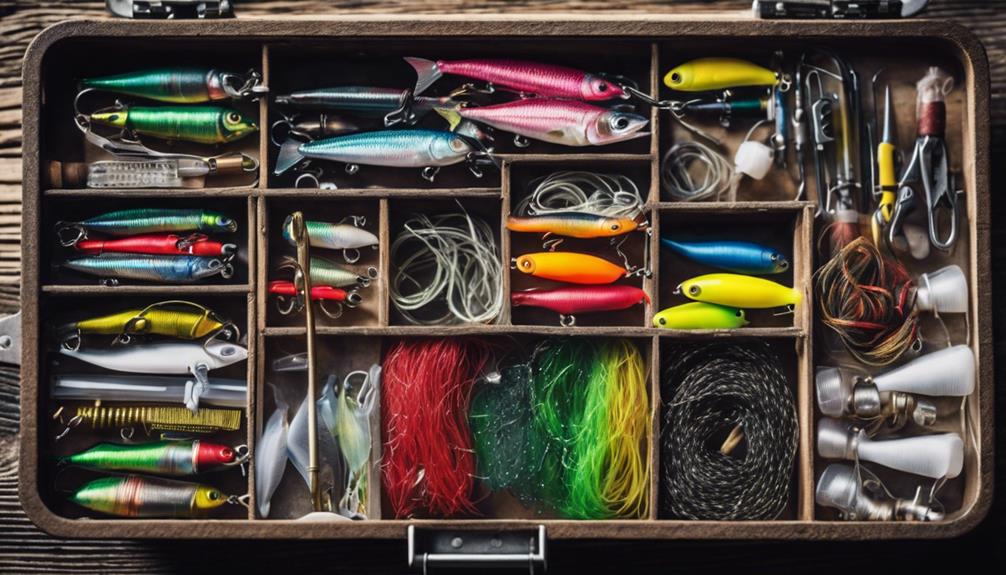Fly fishing is a serene yet thrilling sport that connects anglers with nature in the most profound way. To make the most of this experience, investing in the right fly fishing kit is crucial. In this comprehensive guide, we will explore everything you need to know about fly fishing kits, from essential components to tips for selecting the best options for your needs. Whether you are a seasoned angler or a beginner, this guide will help you understand the significance of a well-chosen fly fishing kit.
Understanding the Basics of a Fly Fishing Kit
A fly fishing kit generally includes all the essential gear needed to start fly fishing effectively. Typically, this kit comprises a fly rod, fly reel, fly line, backing, leader, tippet, and a selection of flies. Each component plays a vital role in the overall performance of your fishing experience. For beginners, fly fishing kits are often available as complete sets, making it easier to get started without the hassle of purchasing items individually. Understanding the basics of each component will help you make informed decisions when selecting your fly fishing kit.
Choosing the Right Fly Rod for Your Kit
The fly rod is the backbone of your fly fishing kit. It is essential to choose the right rod based on your fishing style, target species, and local conditions. Fly rods are typically measured in weight, ranging from 0-12, with lighter rods suited for small fish in calm waters and heavier rods designed for larger fish in fast-moving streams. A 5 or 6-weight rod is a versatile choice for beginners, as it can handle a wide range of fish species. Additionally, consider the rod length, action (fast, medium, or slow), and material (graphite, fiberglass, or bamboo) when selecting your fly rod.
Selecting the Best Fly Reel for Your Kit
The fly reel is another critical component of your fly fishing kit. Its primary function is to store the fly line and provide drag when a fish takes your bait. When choosing a fly reel, consider factors such as size, weight, and the type of drag system (click-and-pawl or disc drag). A reel that matches the weight of your fly rod is crucial for optimal performance. For beginners, a simple, durable, and affordable reel is often the best choice, as it allows for easy learning without overspending. Keep in mind that a quality reel can significantly enhance your fishing experience.
The Importance of Fly Line in Your Fishing Kit
Fly line is a fundamental part of your fly fishing kit, as it helps cast your fly and control its depth in the water. The type of fly line you choose can greatly affect your fishing success. There are three main types of fly lines: floating, sinking, and sink-tip. For beginners, a weight-forward floating line is an excellent choice, as it provides versatility for various fishing situations. Make sure to select a line that matches the weight of your rod for optimal performance. Additionally, consider the line’s taper, which can impact casting distance and accuracy.
Understanding Backing, Leaders, and Tippets
Backing, leaders, and tippets are crucial components of your fly fishing kit that often get overlooked. Backing is the line that connects your fly line to the reel and provides extra length for larger fish. Ensure you have enough backing to accommodate the species you intend to catch. Leaders are tapered lines that connect your fly line to the tippet and help present your fly naturally. Tippets are the final section that attaches to the fly and is usually made from monofilament or fluorocarbon. Understanding how these components work together will enhance your overall fly fishing experience.
Selecting the Right Flies for Your Kit
Flies are the lures used to attract fish, and a well-rounded selection of flies is essential for a successful fly fishing kit. Flies come in two main categories: dry flies and nymphs. Dry flies float on the water’s surface, mimicking insects, while nymphs sink beneath the surface to imitate aquatic life. The choice of flies will depend on the local fish species, water conditions, and the time of year. As a beginner, it’s wise to include a variety of patterns in your kit to adapt to different fishing situations. Popular fly patterns include Adams, Woolly Bugger, and Pheasant Tail Nymph.
Accessories to Enhance Your Fly Fishing Kit
In addition to the core components of a fly fishing kit, there are several accessories that can greatly enhance your fishing experience. Essential accessories include a fly box to store your flies, a landing net for safely bringing fish ashore, and a pair of forceps for removing hooks. A good pair of polarized sunglasses can also help you see into the water, allowing you to spot fish more easily. Furthermore, consider adding a fishing vest or pack to organize your gear and keep essentials easily accessible while you’re out on the water.
Tips for Maintaining Your Fly Fishing Kit
Proper maintenance of your fly fishing kit is crucial for longevity and optimal performance. After each fishing trip, clean your rod and reel to remove dirt and saltwater, which can cause corrosion. Inspect your fly line for any nicks or abrasions, and replace it if necessary. Additionally, store your flies in a dry, cool place to prevent deterioration. Regularly check your leaders and tippets for wear and replace them as needed. By taking care of your equipment, you’ll ensure that your fly fishing kit remains in excellent condition for years to come.
In conclusion, choosing the right fly fishing kit is essential for having a successful and enjoyable experience on the water. By understanding the different components, selecting the right gear, and maintaining your equipment, you’ll be well on your way to becoming a proficient fly angler. Whether you’re casting in serene rivers or challenging streams, the right fly fishing kit will enhance your adventure and deepen your connection with nature. Happy fishing!
